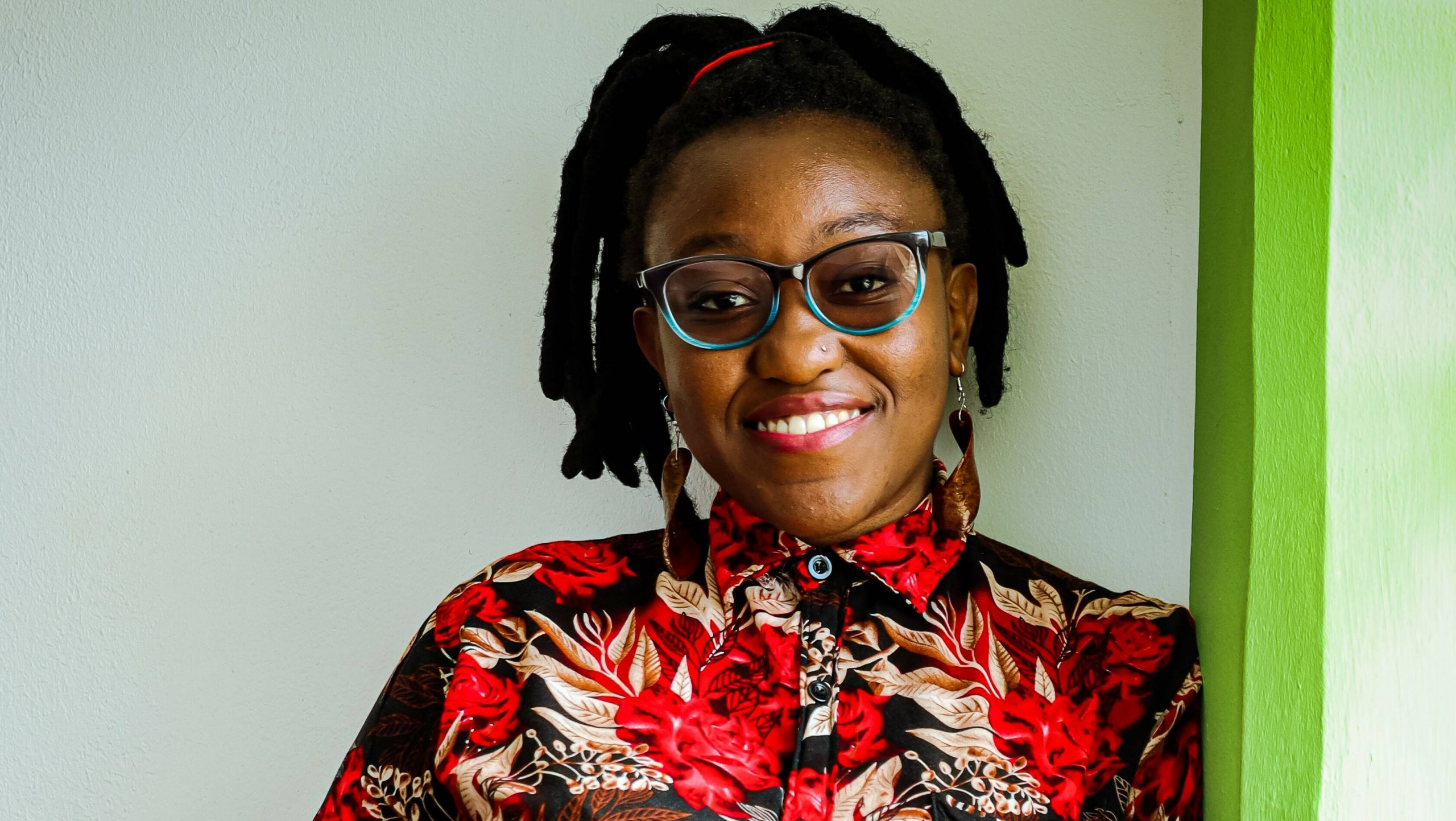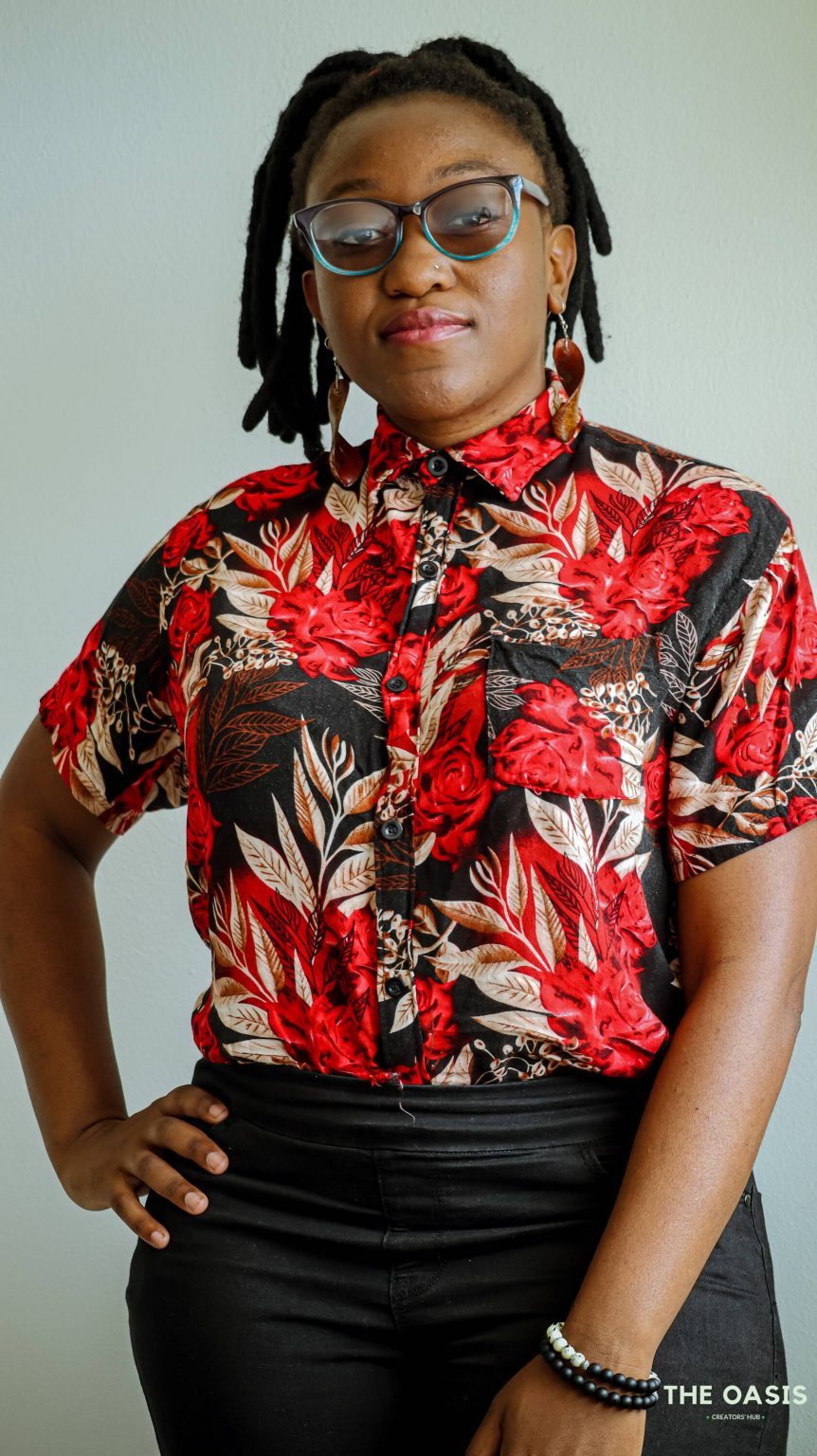
Over the years Zimbabwean women in technology have been surrounded by various forms of biases exhibited around their educational stage up to their employment stage. These biases can cause lifelong impacts that would render any individual questioning their skill. Although not widely, the complexity of such issues has been recognised by countless organisations and these have come together to support and empower women in technology.
Wadzanai Kimberley Bwanya, a Bulawayo-based woman in tech speaks to the Oasis about how she remained focused on her vision to be in the IT sector up until now. She has been selected to be part of the six women who will represent Zimbabwe in the TechWomen exchange programme happening in Mountain View California.

Who is Kim?
I am a creative director and founder of Beedesgined Studio, a creative agency that is currently located at The Oasis in Bulawayo. We specialise in UX designing and web development for companies and business agencies worldwide.
Aside from that, I am a co-founder and tech lead at tea in 60, a social enterprise that does virtual mentorship for Zimbabwean girls and women in/interested in STEM. We are matchmakers for girls who need mentorship and women who have made it, either in the diaspora or locally.
How is your relationship with the Oasis?
Two people are working at the Oasis office and the rest of my team works online. I like the environment and working from here is very convenient, the internet and electricity are mostly reliable, it’s very ideal. Unlike having power cuts at home which sucks because I need to be online most of the time. I recommend people to come here.
What is TechWomen?
TechWomen is an exchange program for emerging women leaders in science, technology, engineering, and mathematics (STEM). They connect women from Africa, Central and South Asia, and the Middle East with professional mentors from Silicon Valley, United States. The participants are provided with access to networks, resources, and knowledge to empower them to reach their full potential.
Where is the program happening?
We will spend all five weeks in California, Mountain View. Initially, we were supposed to be in California for four weeks and spend the last week in DC but because of fluctuating Covid19 cases, we were told to do the DC bit virtually.
What will happen during the exchange program?
We are going to be working on an impact project as six Zimbabweans which we will then pitch towards the end of the seminar. If it’s good enough, we will potentially get funding for it. We’ll also be doing a lot of site seeing.
Tell us about your mentors.
I was matched with three mentors from GoDaddy, a software developer, a UX designer, and, a UX researcher. They will all be working towards making sure I reach my mentorship goals. I will have to present to them what I want to get out of the mentorship and then they collaborate to make it happen.

When did you start knowing about TechWomen?
I started knowing about tech women when I was still in college but I didn’t qualify because they needed you to have done tonnes of stuff.
They might not say it but you can tell from the criteria and from the people that have made it that you need to have been very active so I told myself I’ll apply when I am ready so last year I felt like I was ready and I put it in my calendar like four months before when I was supposed to start applying.
It took me six weeks to apply because you had to write eight essays and I hate writing, I hate talking, anything that requires content that’s why it took me long, but I had a good support system, people who encouraged me and reviewed my essays.
It’s very competitive because I think they had almost ten thousand applicants worldwide and a hundred and thirteen locally. But I made it to the semi-finalists, ten people were called to an interview and they wanted six.
How did the interview go?
We did the interview online on zoom sometime last year, probably between November and December there. I panicked during the interview, I knew what they were going to ask but I didn’t respond properly so after the interview I told myself that I won’t make it. Unfortunately, I didn’t make it, they choose their top six, and I was an alternate just in case any of them drop out.
How did you take that?
I was expecting it so I had already started applying for the next cohort who will be going in September because I now knew where I had gone wrong and how I would correct it.
Fortunately, one person dropped the program for a job in Malaysia and that was amazing because I was in!
How do you feel about being part of TechWomen?
It wasn’t surprising because I was very intentional about it. I knew about it years ago and I intentionally took steps to work towards it but I still feel very fortunate to have cut because when I look at the people who were applying I can’t believe I made it. I look forward to it because it’s promising to expose me to a lot of things that I could not have easily accessed.
What’s your tech history?
Tech for me started way back in primary school, back then we had an old computer and I loved playing games on it and experimenting on it so I always knew that whatever I wanted to do was supposed to be in IT.
In high school, I did computing for my O’s and A’s. Initially, I wanted to do software engineering but when I got to NUST, I ended up choosing computer science and we still worked out okay.
I’ve always known what I wanted to do, unlike many people who figure it out as they go but during my final year that’s when I started realising that I’m more inclined to my artsy side because with computer science it’s a lot of programming and logic but I can balance both. I realised I’m not just a logical thinker I’m also a creative person so I decided to merge what I’m good at and what I’m already studying. That’s when I started doing UX designing and now it’s more of UX engineering.
The TechWomen initiative inspires women to keep pursuing STEM careers by strengthening the participants’ professional capacity, increasing mutual understanding between key networks of professionals, and exposing those to female role models.